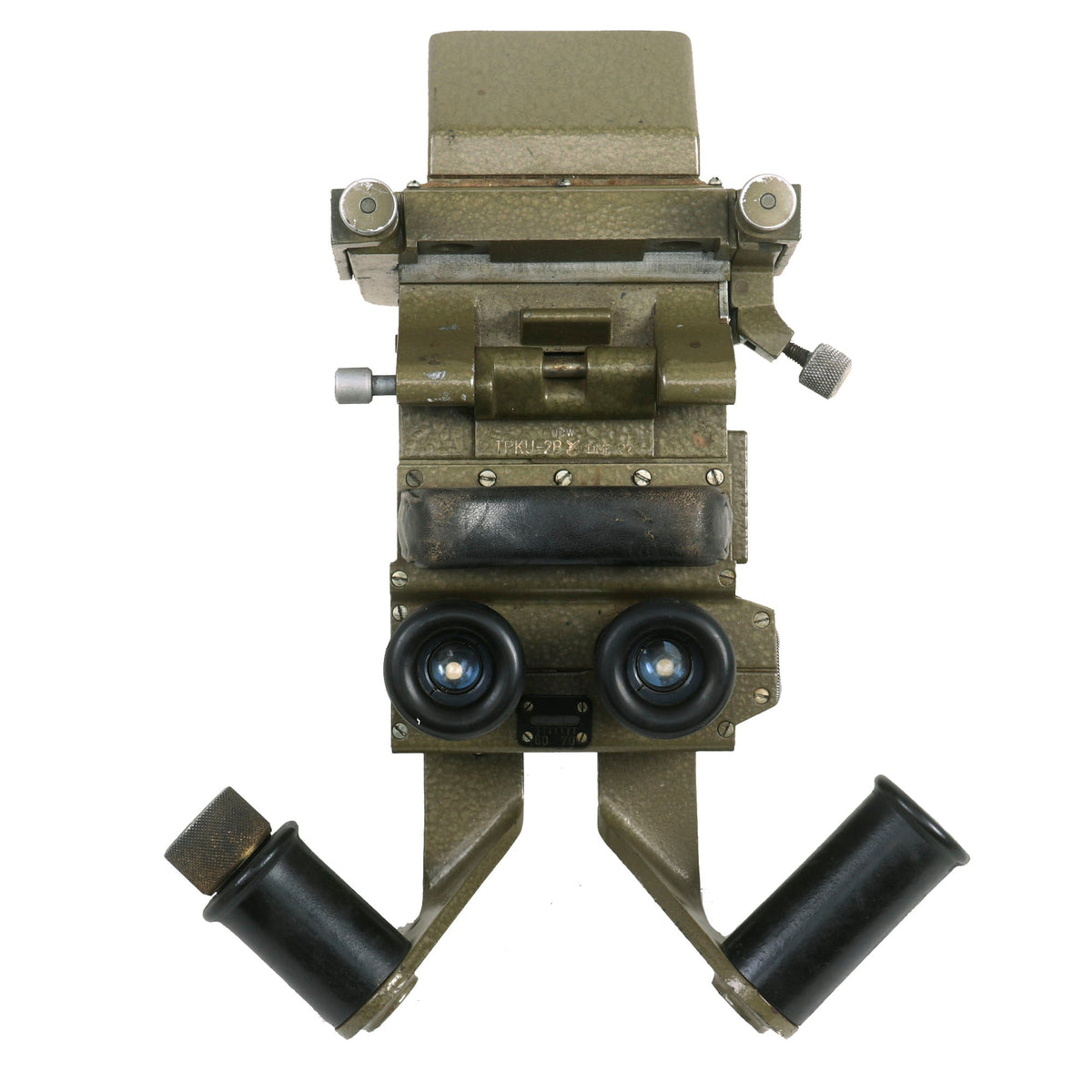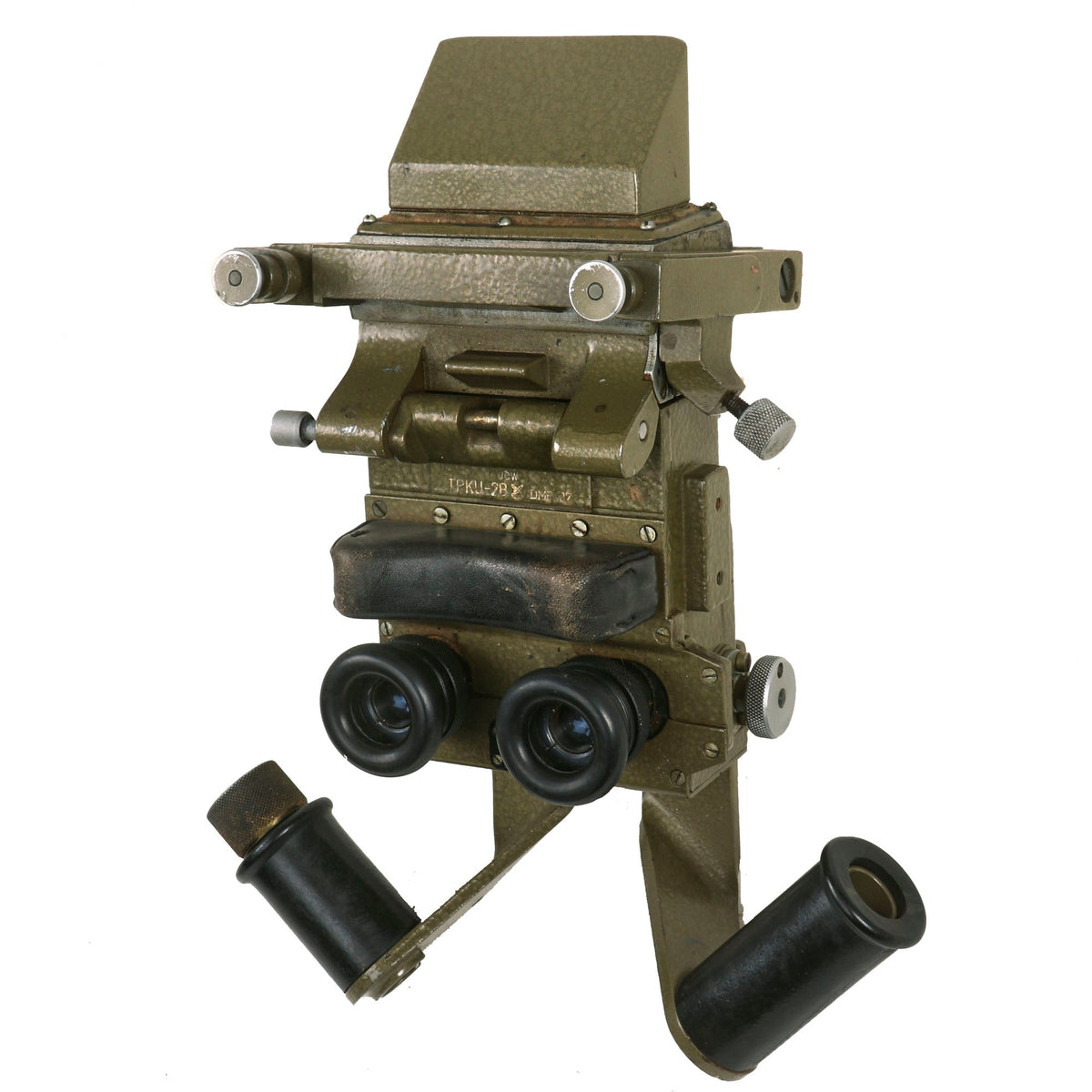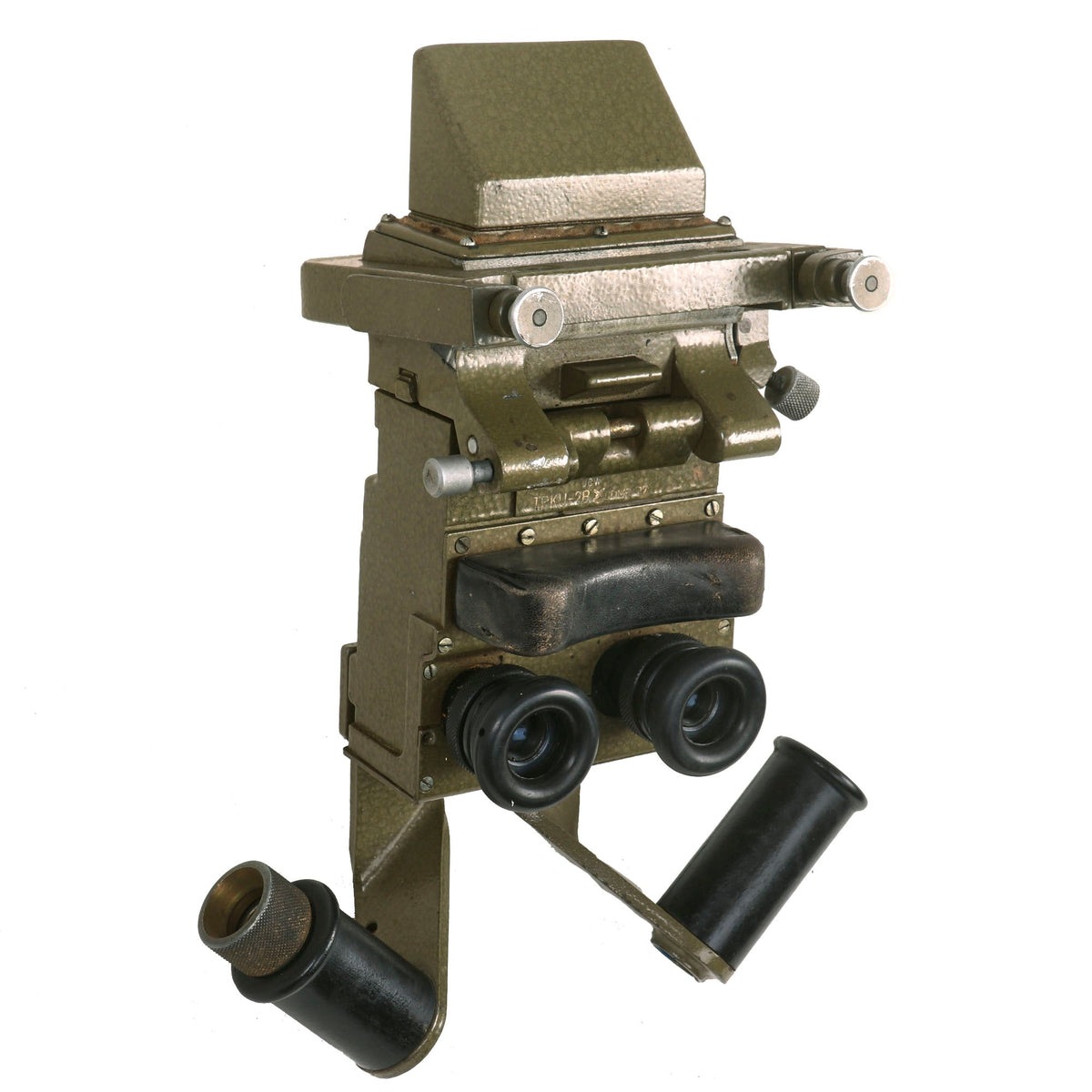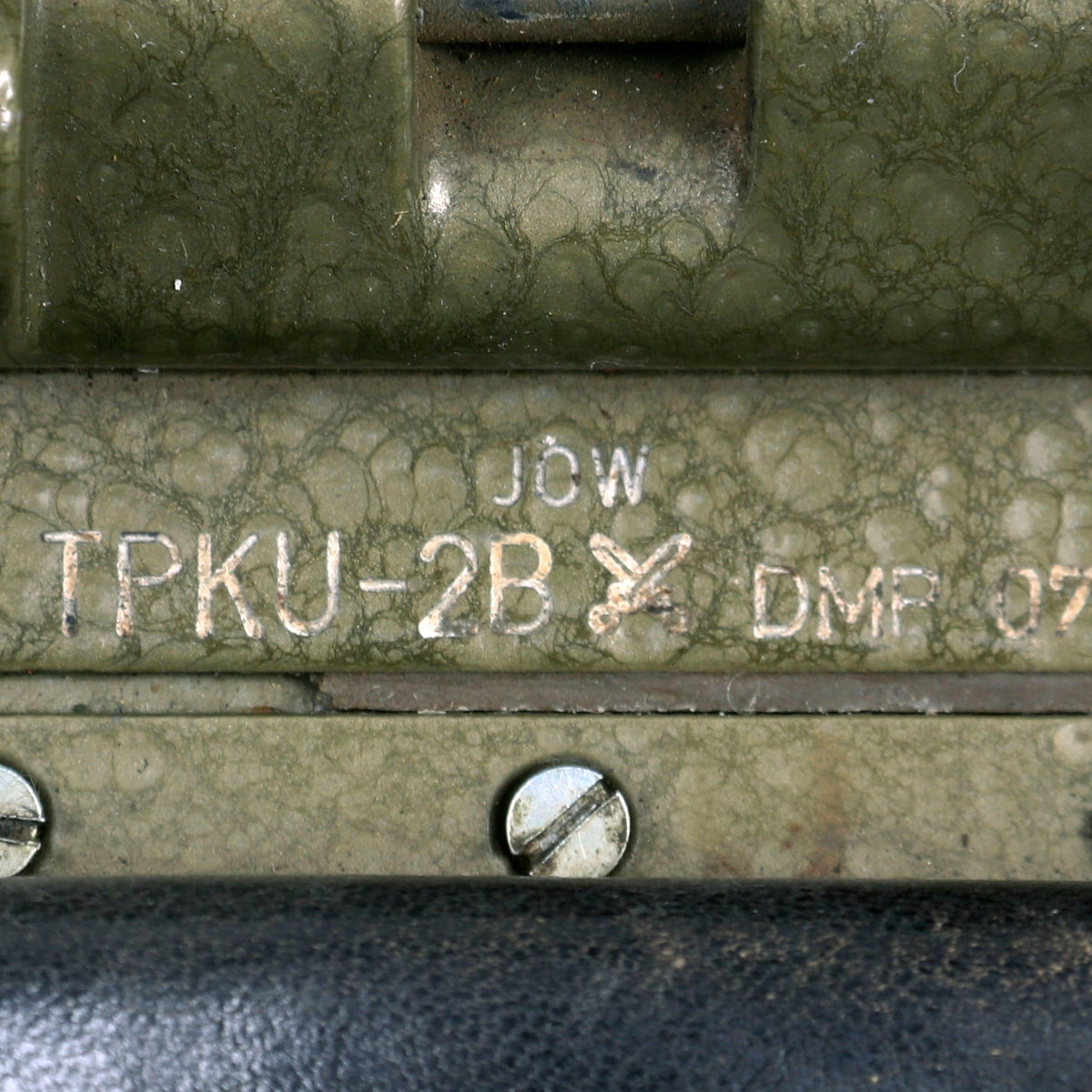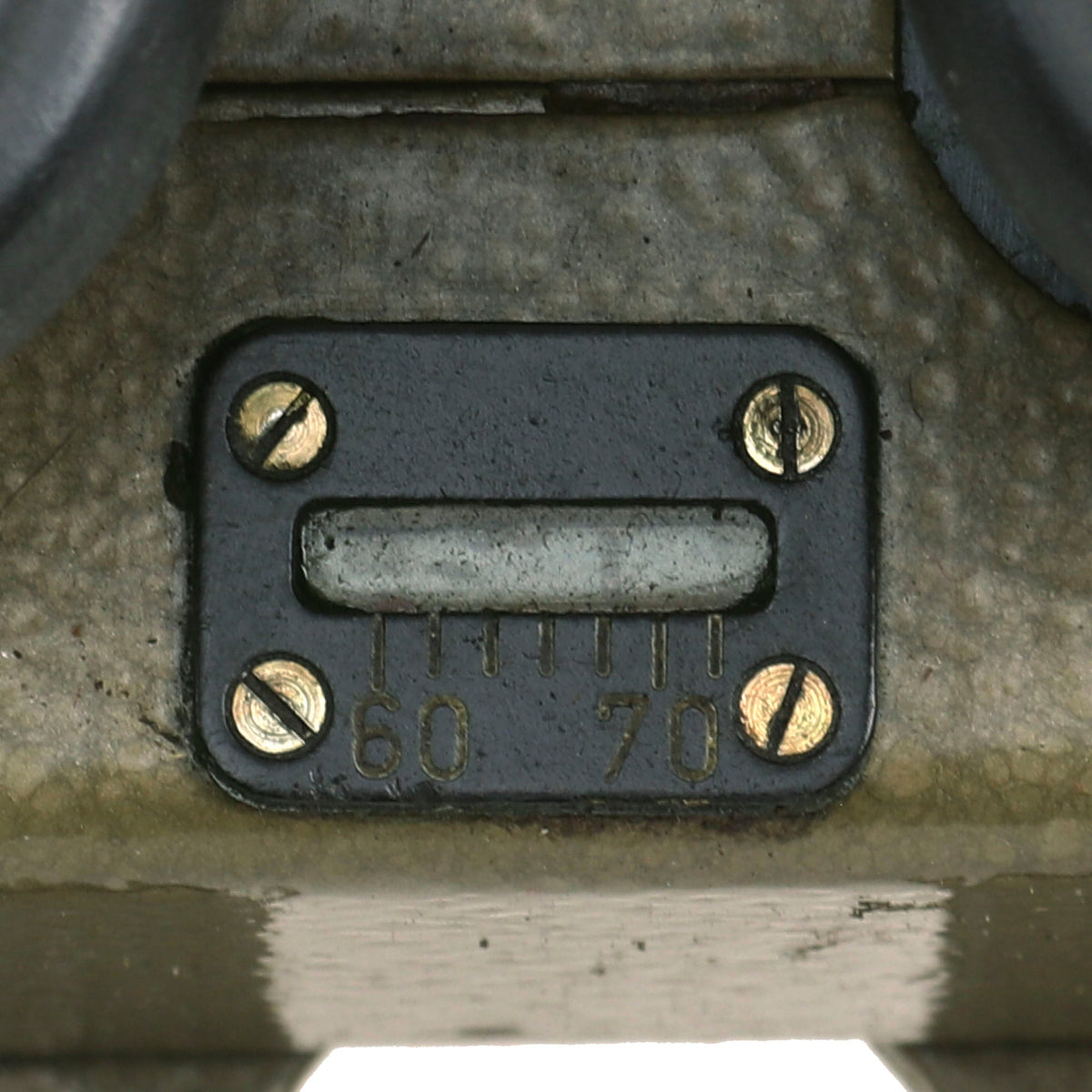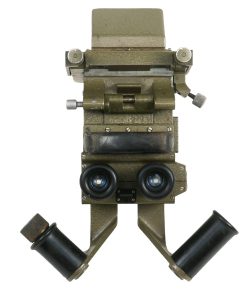Original Cold War Era Soviet T-54/55 Main Battle Tank Commander’s Cupola TPK-2B Daytime Periscope – Formerly A.A.F. Tank Museum Collection Original Items
$ 395,00 $ 118,50
Original Item: Only One Available. This particular Soviet TPK-2B device is an exceptional example of a sighting and quick target designation tool used during the Soviet era. The periscope, which is a critical component of the device, is in excellent condition. It provides a crystal clear sight picture, allowing the user to locate and aim at a target with relative ease.
All adjustment knobs on the device are fully functional, allowing the user to make the necessary adjustments while tracking their target. Additionally, all latches on the device are present and work correctly, ensuring that the device’s components remain securely in place.
One notable aspect of this device is that it did not have a vision block of its own, reducing the total number of components to four. Despite this, the device still offered a x5 magnification, which allowed for a more detailed view of the target.
Another unique feature of this particular TPK-2B device is the distance measuring scale added on the lenses. This feature allowed the user to determine the approximate distance of a 2.7-meter-tall target, such as an average NATO tank, at ranges up to 3000 meters. This feature was particularly useful in targeting enemy tanks or other military vehicles.
Lastly, in case the prism mirror was damaged, this device could be opened, and the prism could be pulled out and replaced. This feature ensured that the device remained operational and provided the user with a reliable and accurate sighting and target designation tool.
This periscope optic came to us from the American Armoured Foundation, Inc. Tank and Ordnance Memorial Museum. The AAF Tank Museum was a living memorial dedicated to the Tank and Cavalry soldiers of the world. Before 1981 some of the artifacts that make up the AAF Tank Museum was a private collection belonging to Mr. William Gasser. Mr. Gasser felt that his collection would be beneficial in educating present and future generations to the sacrifices made and the technologies gained during war. Therefore, in 1981 the AAF Tank Museum was established as a non-profit charitable organization, and Mr. Gasser donated his private collection to the Tank Museum. Mr. Gasser is still active as Volunteer Director and Curator of the Tank Museum and his knowledge of military history has been a great asset to the museum. Unfortunately after 20 years of operation it had to close its doors, which is when this periscope was acquired.
This is a fantastic example and comes more than ready for further research and display.
The T-54 and T-55 combines a high-velocity gun with a highly mobile chassis, low silhouette, and exceptional long-range endurance. The T-54/55 tanks have been produced in greater quantity than any other tank in the world. Seven main production models have been widely used throughout the Warsaw Pact and in many other countries. The T-54/55 series has been manufactured in Czechoslovakia and Poland as well as in China where it is known as Type 59. More than a dozen countries have produced upgraded T-55 variants with similar capabilities in protection and lethality. The tank featured many innovations, many of these being in the fire controls of the T-54 and the T-55.
The commander sits directly behind the gunner under a 360 degree traversable commander’s cupola. Five wide prism vision blocks give a good view and all-round orientation. For sighting and quick target designation a binocular observation device is inserted in the center. In the first model was the TPK-1. It has a x2.75 magnification and also accommodates one of the five vision blocks. Not long after becoming mass-produced, all TPK-1 devices were replaced by TPKU-2B devices. This device did not have a vision block of its own (reducing the total number to 4), yet it gave a x5 magnification. A distance measuring scale was added on the lenses, it could reveal the approximate distance of a 2.7 meter tall target (an average NATO tank) at ranges up to 3000 meters. In case of the damage of the prism mirror, the device could be opened, the prism pulled out and replaced.
Together with the possibility to traverse the turret, the commander could also seek for targets independently from the gunner. With a push of a button located on the left handle of the TPKU-2b device, the turret swung into the center of the commander’s TPKU-2b visor lines not only in horizontal plane, but in vertical too. The turret swung with maximum recommended speed on the view line of the commander and stopped with correspondence of the visor lines. However, the commander had to hold on to his dome and work against the turret rotation, keeping the target in his sights until the turret stopped. This designation method was not totally accurate, but accurate enough for the gunner to see the target in his field of vision.
Fast Shipping with Professional Packaging
Thanks to our longstanding association with UPS FedEx DHL, and other major international carriers, we are able to provide a range of shipping options. Our warehouse staff is expertly trained and will wrap your products according to our exact and precise specifications. Prior to shipping, your goods will be thoroughly examined and securely secured. We ship to thousands clients each day across multiple countries. This shows how we're dedicated to be the largest retailer on the internet. Warehouses and distribution centres can be located throughout Europe as well as the USA.
Note: Orders with more than one item will be assigned a processing date depending on the item.
Before shipping before shipping, we'll conduct a thorough inspection of the items you have ordered. Today, the majority of orders will be delivered within 48 hours. The delivery time will be between 3-7 days.
Returns
The stock is dynamic and we cannot completely manage it because multiple stakeholders are involved, including our factory and warehouse. So the actual stock may alter at any time. It's possible that you may not receive your order once the order has been made.
Our policy is valid for a period of 30 days. If you don't receive the product within 30 days, we are not able to issue a refund or an exchange.
You can only return an item if it is unused and in the same state as the day you received it. You must have the item in its original packaging.
Related products
Uncategorized
Armoured Fighting Vehicles of the World: AFVs of World War One (Hardcover Book) New Made Items
Uncategorized
Uncategorized
Uncategorized
Uncategorized
Uncategorized
Uncategorized
Uncategorized
Armored Burgonet Helmet & Polearm from Scottish Castle Leith Hall Circa 1700 Original Items
Uncategorized
Band of Brothers ORIGINAL GERMAN WWII Le. F.H. 18 10.5cm ARTILLERY PIECE Original Items
Uncategorized
Uncategorized
Uncategorized
Uncategorized
Uncategorized
Uncategorized
Uncategorized
Australian WWII Owen MK1 Machine Carbine SMG Custom Fabricated Replica with Sling Original Items
Uncategorized
Uncategorized
Uncategorized
Uncategorized
